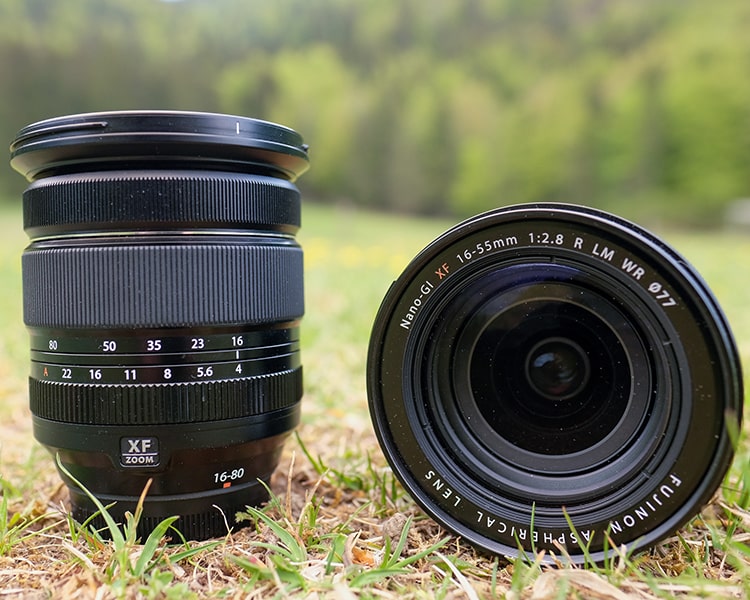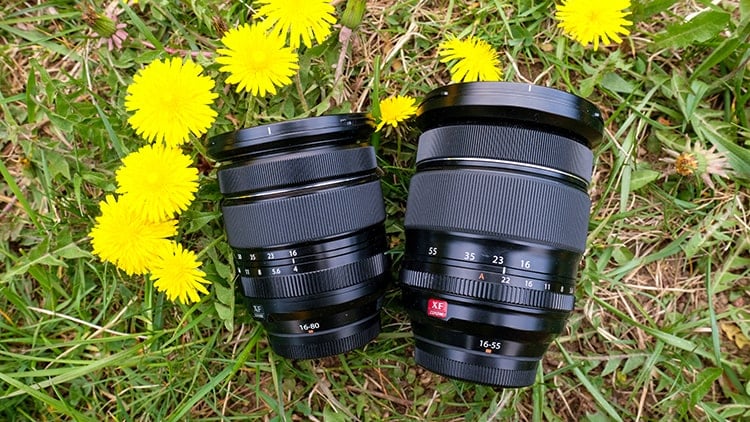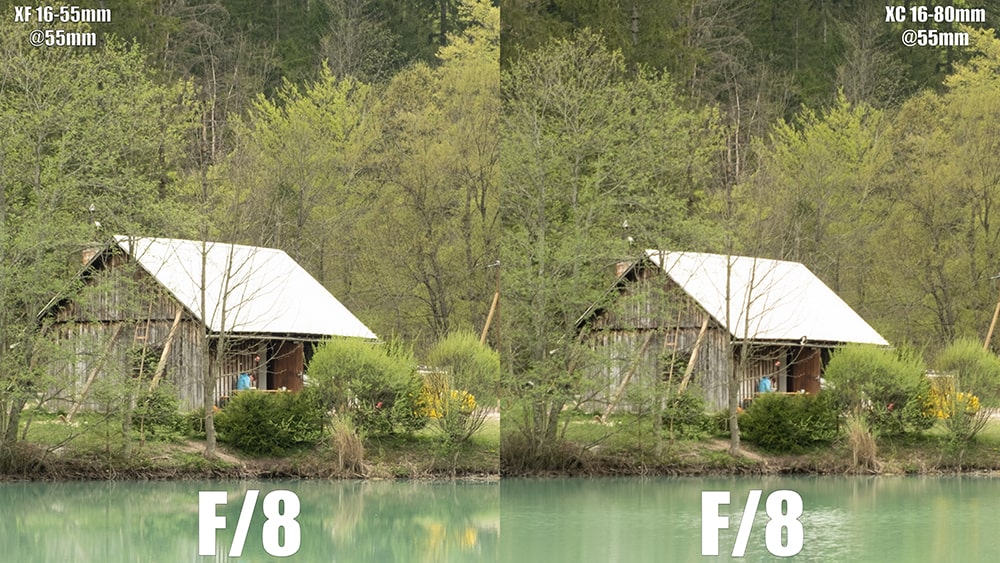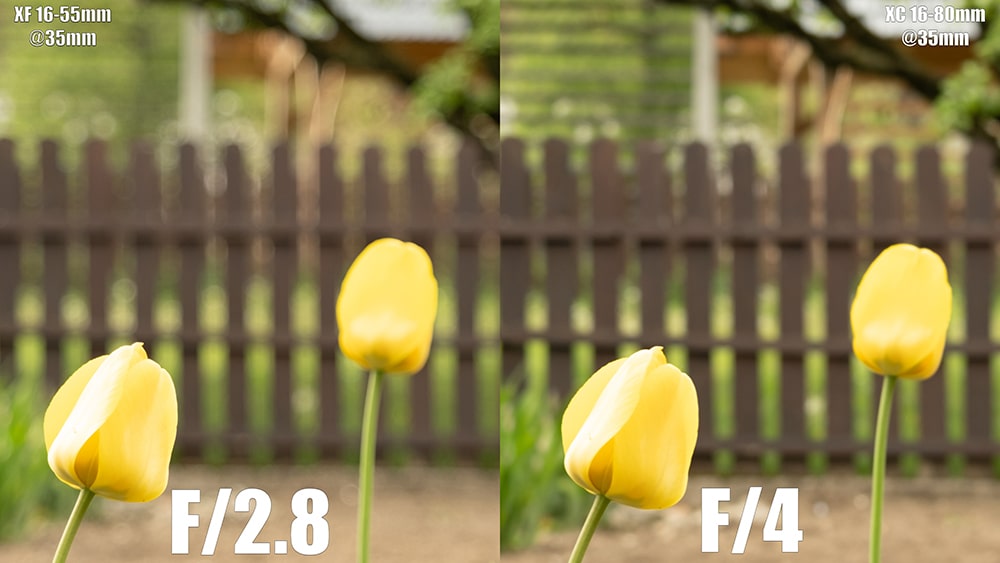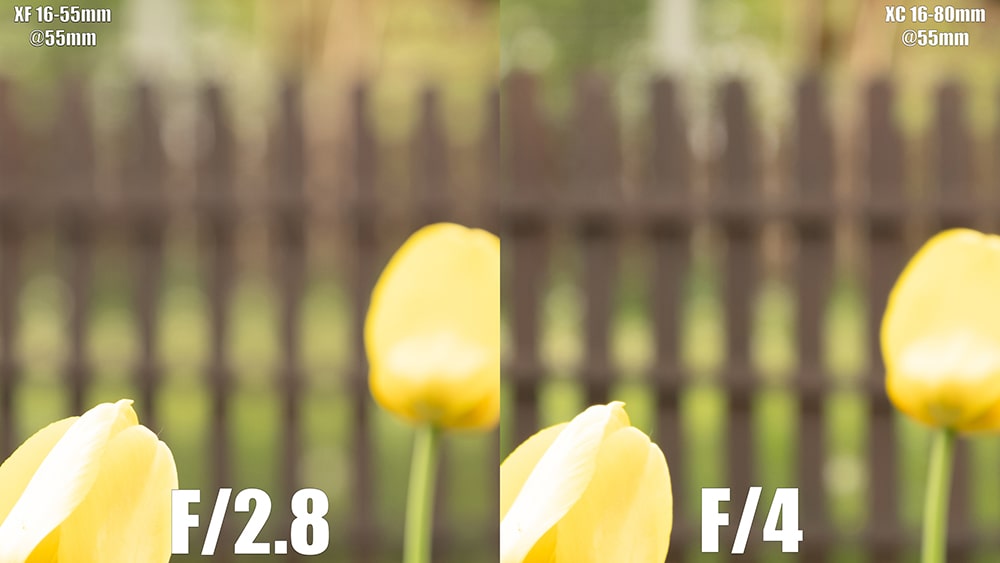Fujifilm 16-55mm VS 16-80mm
XF 16-55mm F2.8 VS XF 16-80mm F4 Midrange Zoom
The XF 16-55mm f2.8, my current and go-to mid-range zoom lens for landscape photography. As a full-time landscape photographer, I love the idea of having a tri lens setup (Learn about Tri Lenses here). The XF 16-55mm fits my photography needs due to size, weight and image quality.
I have recently done a blog regarding this lens to read here or watch the full review here.
Fujinon Lens XF 16-55mm F2.8 R LM WR
A complete comparison review of the Fujifilm XF 16-55mm F2.8 VS XF 16-80mm F4 Fujifilm's two most versatile lenses. Today we'll review the sharpness, rendition, contrast and overall usability of these two lenses. Therefore, we'll determine what suits your photography requirements from a price vs image quality perspective.
Fujinon XF 16-55mm essential facts:
- 16-55mm Focal Length (Equiv 24-84mm in 35mm format)
- F2.8 Maximum Aperture & F/22 Minimum Aperture
- 83.3 mm diameter x 106.0 (129.5 mm fully extended at 55mm)
- Weight 655g (23.1 oz)
- Weather-Sealed
- 77mm filter thread
- 17 elements in 12 group
- 9 rounded blades
- Autofocus
- Price €1099.00
Image Stabilization
The one and possibly only downfall regarding this lens, the lack of an image stabilizer! Additionally, paired with the X-H1 and its superb IBIS, plus the glass itself's additional weight, it makes an acceptable reduction of shake from the non-stabilized lens.
Finally, paired with the X-T3, handheld images are reduced to daytime scenes or bumping up that ISO to combat the lack of stabilization.
Fujinon XF Autofocus & Sharpness
Autofocus in both video and photography is merely perfect. Besides, this testing was in bright outdoor and dark indoor conditions, finding it reliable, accurate and silent through the entire focal range.
Lastly, sharpness is supreme from 16mm to 55mm, from max f2.8 aperture to f11. The XF 16-55mm wins in sharpness in the photo comparison below, especially from 16-35mm, where the XF 16-80mm lens suffers. But for Landscape photography, the 16-55mm fight back, which we'll discuss later.
Build Quality
The top of the range Red Badge mid-range zoom from Fujifilm offers superb build quality. In comparison, I often refer to this lens as my "bag of primes", referring to the excellent build and image quality. The Fujifilm XF 16-55mm f2.8 is made from anodized aluminium, not cheesy plastic. In comparison, it feels much better to the build quality in comparison manufacturers from Nikon and Canon.
In conclusion, this lens offers an excellent balance of price to quality standpoint. A glass that doesn't provide OIS is a little hiccup for me personally. Finally, the pin-sharp image quality, build quality and constant F2.8 are aimed towards the professional photographer.
That's just for photography, so how does it stack up again the hybrid machine in the Fujifilm XF 16-80mm F/4.
Fujinon XF 16-80mm f/4 R OIS WR
The Fujifilm XF 16-80mm is a new kit lens from Fujifilm that offers excellent versatility for photography and videography. Although it may not have that "pro" quality red badge certification, it's equipped with six stops of OIS, versatile focal range and exceptional sharpness at an affordable price. Personally, suppose you're in the market for a new Fujifilm X-T3. In that case, the kit option accompanied with the XF 16-80mm is an absolute steal.
I have recently done a blog regarding this lens to read here or watch the full review here.
Fujinon XF 16-80mm essential facts:
- 16-80mm Focal Length (Equiv 24-120mm in 35mm format)
- F/4 Maximum Aperture & F/22 Minimum Aperture
- 78.3 mm diameter x 88.9mm (131.5mm fully extended at 80mm)
- Weight 440g (15.52 oz)
- "Up to" 6 stops of Image Stabilization
- 72mm filter thread
- 16 elements in 12 groups
- 9 rounded blades
- Autofocus & Image Stabilised
- Price €849.00 (best price in a kit with X-T3)
Image Stabilization
The Fujifilm XF 16-80mm F/4, equipped with a completely new and technology leading image stabilizer system. Additionally, this IS course can not be found in any other Fujifilm lenses.
What sets it apart from the rest?
The unstabilized body of the Fujifilm X-T3 comes back into play with the XF 16-80, boasting a whopping 6-stops of IS. However, this is not where it stops. There is no IS switch on the barrel of the lens, designed specifically for hybrid shooters. As a result, it internally recognizes when positioned on a tripod and turns the IS mechanism off. For me, it is a complete game-changer when travelling, shooting video/photos.
Autofocus & Sharpness
In both video and photography, the autofocus system in near perfect. The lens found objects remarkably quick, silent, accurate and reliable (Tested outside and inside). Tested with the Fujifilm X-T3, the Fujifilm system has come a long way with there autofocus system. Testing was carried out from 16mm to 80mm and couldn't fault the system.
Finally, sharpness from a relatively expensive, but the feature-packed lens is exceptional. Below, we will compare this lens's slight downside, from 16mm-35mm to the 16-55mm f2.8. However, for landscape photography shooting at f8 and travel photography shooting at f4-5.6, this lens is bloody hard to beat.
Build Quality
It doesn't have a red badge on it, but if you ask me, it could quite easily. Equipped with Weather-resistant, smooth aperture ring with marking, firm focus ring and buttery soft focus ring.
Reliable build quality and image quality to match - is this the ultimate Fujifilm lens?
XF 16-55mm VS XF 16-80mm Comparison
After using all three of Fujifilm's mid-range lenses, I will keep this short, sweet and straightforward. Fujifilm 16-55mm VS 16-80mm VS 18-55mm.
Fujifilm XF 18-55mm F2.8-4 - Perfect for hybrid budget shooters that travel and are after minimal gear with the perfect F2.8.
Fujifilm XF 16-80mm F/4 - The jack of all trade! Perfect for hybrid shooters that want better quality than the 18-55mm with mind-blowing image stabilization and ideal focal range. Hard to beat!
Fujifilm XF 16-55mm F/2.8 - Designed for professional photographers that demand the highest quality, where weight and money is not deciding factor. Fantastic for video use equipped with the X-T4, Gimbal or Tripod.
XF Red Badge VS XF Kit lens Comparison:
- Price - XF 16-55mm €1099.00
- - XF 16-80mm €849.00
- Metal VS Metal build quality
- XF 16-55 F/2.8 VS XF 18-55 F/2.8-4
- 16-55mm VS 16-80mm Focal Range
- No OIS VS 6 stops OIS
- 655grams VS 440grams
- 77mm filter thread vs 72mm
- 17/12 VS 16/12 (Elements/Groups)
Image Quality Comparison
Below is a comparison of the Fujifilm 16-55mm VS 16-80mm image quality from both lens at the most extensive focal length - 16mm, 23mm, 35mm, 50mm and 80mm. Therefore, we will get a complete contrast at the max apertures- f/2.8, f5.6 f/8, f11 and f/16 through the entire range of these lenses. You can download the JPEG & RAW images below for FREE!
DOWNLOAD COMPARISON RAW FILES HERE!!!
Bokeh Comparison & Close Focusing
No lens achieves that ultra buttery clean look here like we expect from the 56mm F1.2 from Fujifilm. As a result, the constant F2.8 aperture from the XF 16-55mm expects this to excel at 35mm and 55mm.
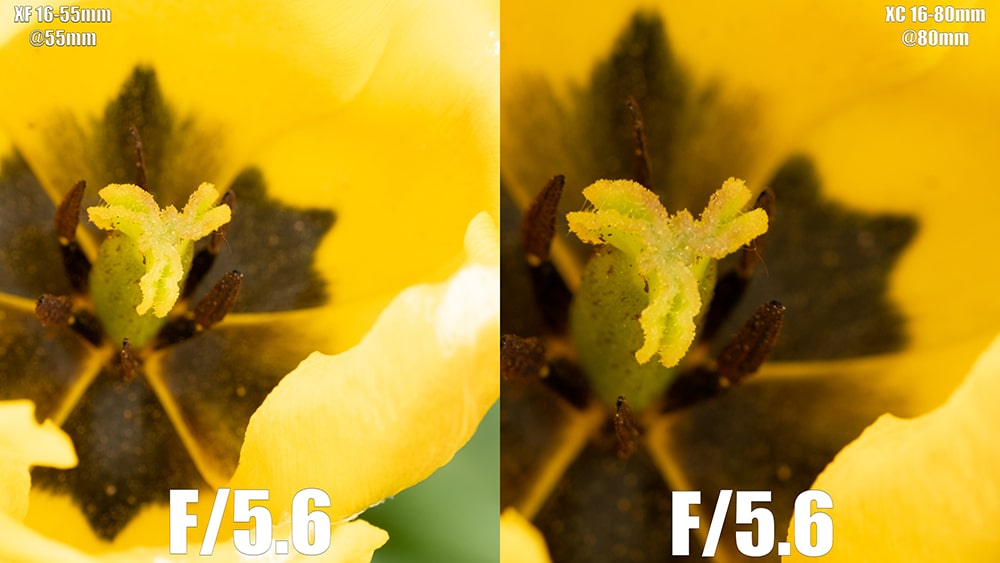
XF 16-55mm VS 16-80mm - What's Better?
In conclusion, comparing the 'premium red badge' from Fujifilm directly against the new versatile king, the XF 16-55mm F2.8 is a winner, slightly. But, saying this, it's a slight winner for photography, but that's not solely how I use this lens. Therefore, answer this question:
"Is image quality a top and "only" priority to you?"
If yes and money is no object, splash out and get the Red Badge XF 16-55. However, I am a hybrid shooter that uses my lens for multiple situations and conditions. Therefore, the Fujifilm XF 16-80mm F/4 is a perfect fit for my requirements.
In conclusion, Fujifilm 16-55mm VS 16-80mm, what's the best midrange Fujifilm Lens? Hand's down. For me, it's the XF 16-80mm F4! As a result, I would go ahead and say it's Fuji's 'almost perfect' lens through their entire lens lineup.
It's 100% worth the money for various requirements! Disagree? Let me know in the comments below what you think.
